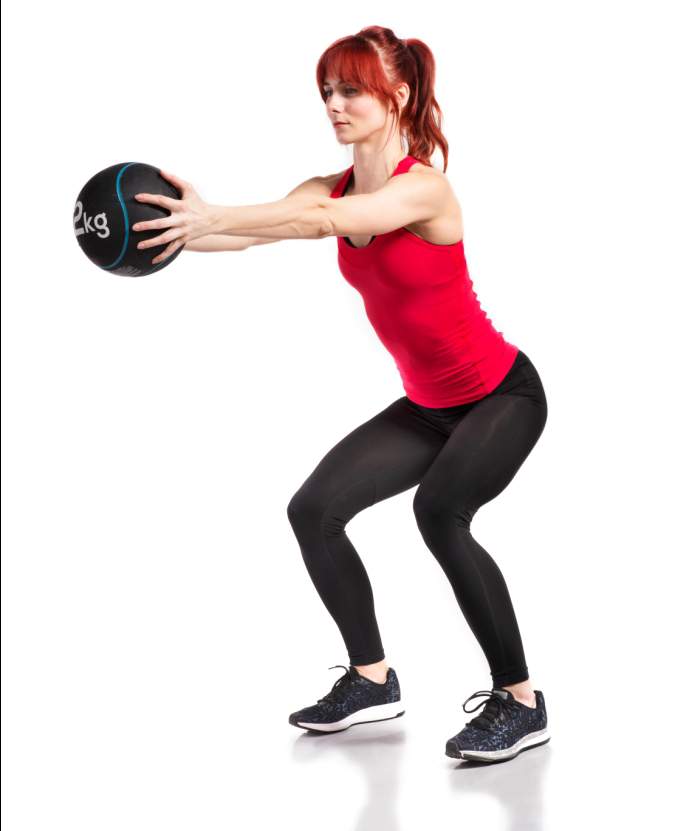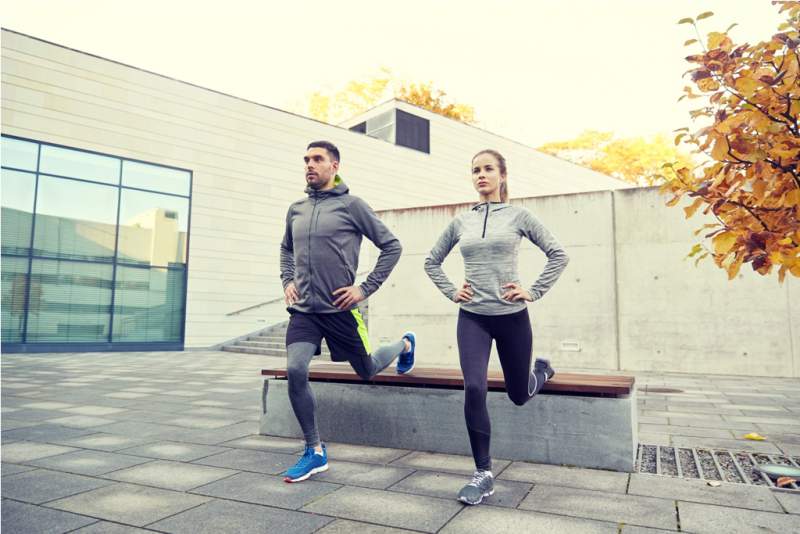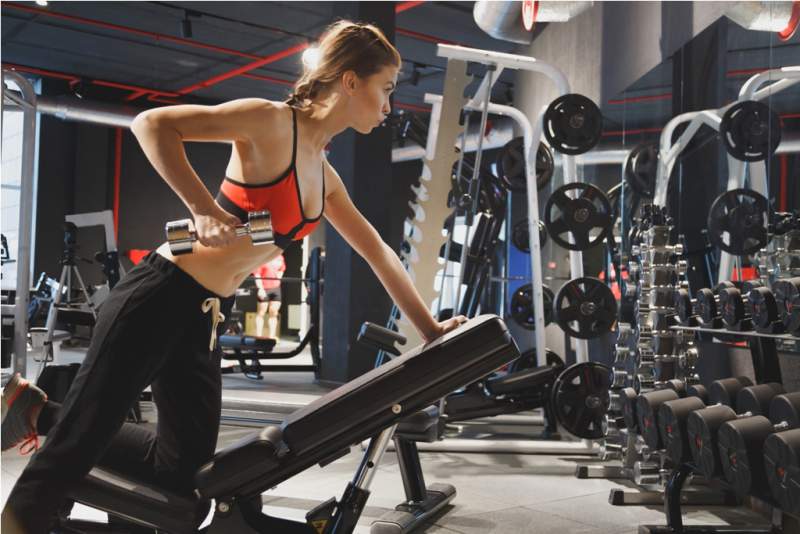Whether you lack access to a gym or simply prefer working out at home, there are lots of options for people who want to get in a great lower body workout without lifting weights. If you’re not sure where to start, give these six lower body exercises a try today.
1. Wall Sits
 Wall sits are a great isometric (non-moving) exercise for people who want to strengthen their quads.
Wall sits are a great isometric (non-moving) exercise for people who want to strengthen their quads.
Simply lean against the wall and, while keeping your back against it, slide down until your knees form a 90-degree angle. Start by holding this position for 30 seconds, then increase your time when that starts to get easier.
Make sure you’re not pressing into your thighs with your hands or pushing against the wall to try and relieve the pressure on your legs — the discomfort is the whole point of the exercise! To avoid temptation, try folding your arms or extending them in front of you.
2. Bodyweight Squats
 Another staple lower body strengthener is the bodyweight squat. To keep your knees and hips safe, make sure you’re doing your squats with good form. To do this, keep the following cues in mind:
Another staple lower body strengthener is the bodyweight squat. To keep your knees and hips safe, make sure you’re doing your squats with good form. To do this, keep the following cues in mind:
Start with your feet shoulder-distance from each other
Hands can be behind the head or extended in front of you
Bend your knees and sit your hips back and down, lowering so your hips are parallel to the floor
If you have the range of motion, sit lower, but avoid rounding your back to do so
When you’ve gone as low as you’re able, push into the floor to stand back up
Avoid letting your knees cave in as you return to the beginning position (squeezing your glutes helps prevent this)
3. Lunges
 Lunges help strengthen almost every muscle in the lower body, including the quads, hamstrings, glutes, and calves. They also challenge your core since you have to stabilize yourself when the legs are in a split position.
Lunges help strengthen almost every muscle in the lower body, including the quads, hamstrings, glutes, and calves. They also challenge your core since you have to stabilize yourself when the legs are in a split position.
If you’ve never done lunges before, start by following these instructions:
Start with your feet together, hands on your hips
Step forward 2-3 feet with your right leg and bend your knees. They should both form 90-degree angles
Make sure your right knee does extend past your toes and keep your back knee hovering off the ground
Press into your right leg to stand up and return to the starting position
Repeat with the left leg stepping forward
You can do lunges in place this way, or do reverse lunges by stepping backward instead forward.
4. Hamstring Curls
 If you have access to an exercise stability ball, this is a great way to challenge the hamstrings and glutes.
If you have access to an exercise stability ball, this is a great way to challenge the hamstrings and glutes.
Keep these cues in mind to make sure you’re using proper form and working the right muscles.
Start by lying on your back with your feet and ankles on the stability ball
Press into the ground with your hands and shoulders to lift your hips
Dig into the ball with your feet, then slowly bend your knees and drag the ball toward your hips
When your knees are fully bent and the ball is as close as it can go, straighten your legs and return to the starting position
You can also do a single-leg version of this exercise — keep one foot on the floor and put the other on the ball — if it’s too difficult.
5. Bridges
 If you don’t have a stability ball handy, you can still work the glutes and hamstrings with floor bridges. To do a bridge properly, follow these instructions:
If you don’t have a stability ball handy, you can still work the glutes and hamstrings with floor bridges. To do a bridge properly, follow these instructions:
Lie on your back with knees bent and feet flat
Your feet should be close enough to your hips that you can reach down and touch them with your fingertips
Push into the floor with your heels and your hands to lift the hips up off the ground
Lift your hips and low back off the floor as high as they’ll go without putting any strain on your back
To feel the exercise more in the hamstrings, make sure you’re pushing into the ground with your feet
You can also extend one leg and then bring it back in to target the hamstrings better.
6. Jump Squats
 Jump squats are a good way to work the legs while also getting a bit of cardio in. Only move on to jump squats after you’ve mastered to bodyweight squat.
Jump squats are a good way to work the legs while also getting a bit of cardio in. Only move on to jump squats after you’ve mastered to bodyweight squat.
Keep these tips in mind to make sure you’re doing jump squats correctly:
Start just like would if you were doing a regular squat
Lower your hips down toward the floor, then, instead of standing up, use the downward motion as momentum to help you jump off the ground and reach your arms toward the ceiling
Land softly in the beginning position with your knees slightly bent
How to Make These Exercises Harder
 If you’ve mastered these movements but want to make them more challenging (without adding weight for resistance), give these tips a try:
If you’ve mastered these movements but want to make them more challenging (without adding weight for resistance), give these tips a try:
- Increase your reps: If you always do three sets of ten reps, try going for 12, 15, or even 20.
- Shorten your rest: You can also decrease the amount of time you spend resting between sets to challenge your muscles and increase your calorie burn.
- Pause: Pausing at the bottom of a squat or in a lunge position forces your muscles to work harder. It also takes away momentum, so you have to rely on strength to get you back up.
- Adjust your stance: Try doing wider or narrower squats once you’ve mastered the basic position. Or, do lateral lunges instead of front and back ones.
- Challenge your balance: When regular squats are easy, up the ante by doing single-leg squats (also known as pistol squats). You can also challenge your balance by placing one foot on a chair or stability ball while doing lunges.
You don’t need an expensive gym membership or fancy complicated equipment to get in a good lower body workout. Give these exercises a try and you’ll tone up in no time!
